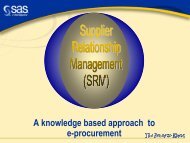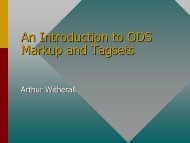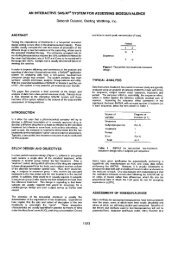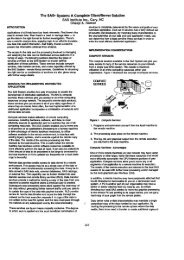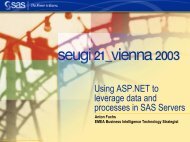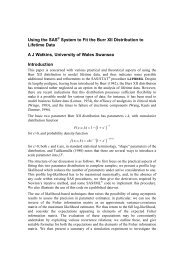Oda Bellingrath, dibera Building a data warehouse often does not ...
Oda Bellingrath, dibera Building a data warehouse often does not ...
Oda Bellingrath, dibera Building a data warehouse often does not ...
Create successful ePaper yourself
Turn your PDF publications into a flip-book with our unique Google optimized e-Paper software.
At first dib-eisa was designed as a tool on classical client-server bases. This May we<br />
have implemented the first prototype of dib-eisa/WWW on SAS/IntrNet TM bases.<br />
Both tools have the same look-and-feel and offer nearly the same functionality. Even<br />
the techniques to access and select <strong>data</strong> are similar. Once you have implemented<br />
an application with the tool dib-eisa, the programming effort to write a dib-eisa/WWW<br />
application on SAS/IntrNet TM bases is relatively low.<br />
But the technical background, the requirements for client and server are different.<br />
Also the clients, using the tool, can (but <strong>not</strong> have to) be distinguished.<br />
The user selects a dib-eisa application and defines <strong>data</strong> selections, drill-down levels<br />
and cross tables. These informations are submitted remote to the server. A SAS TM<br />
Macro on the server selects, processes and summarizes the <strong>data</strong> and computes drilldown<br />
levels. The entire functionality of SAS TM can be integrated in this macro. The<br />
macro processing results in a work-file that is downloaded to the client. User actions<br />
are analyzed by the application, resulting in different views of the work-file.




